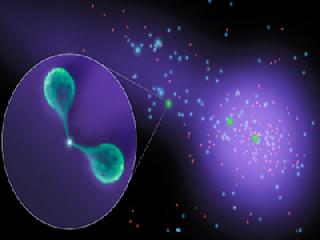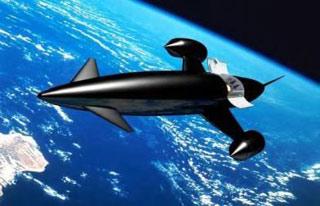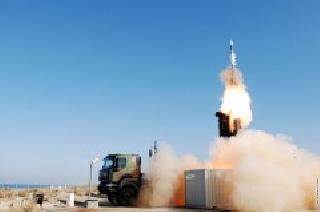
This diagram shows an unusual galaxy with bent jets (see inset). Image Photo: NASA/JPL-Caltech
PASADENA (BNS): NASA Spitzer Space Telescope have caught sight of an unusual galaxy that has illuminated new details about a celestial "sandbar" connecting two massive islands of galaxies.
According to NASA, these "sandbars," or filaments, are known to span vast distances between galaxy clusters and form a lattice-like structure known as the cosmic web.
In 2008, Spitzer's infrared eyes revealed that one such intergalactic filament containing star-forming galaxies ran between the galaxy clusters called Abell 1763 and Abell 1770.
"These filaments are integral to the evolution of galaxy clusters -- among the biggest gravitationally bound objects in the universe -- as well as the creation of new generations of stars," Louise Edwards, a postdoctoral researcher at the California Institute of Technology in Pasadena, said.
Astronomers spotted the bent galaxy about 11 million light-years away from the center of the galaxy cluster Abell 1763 during follow-up observations with the WIYN Observatory near Tucson, Arizona, and radio-wave observations by the Very Large Array near Socorro, New Mexico.
The galaxy has an unusual ratio of radio to infrared light, as measured by the Very Large Array and Spitzer. This is due in part to the galaxy having twin jets of material spewing in opposite directions from a supermassive black hole at its center. These jets have puffed out into giant lobes of material that emit a tremendous amount of radio waves.
Astronomers found these lobes appear to be bent back and away from the galaxy's trajectory through the filament. This bow shape, the astronomers reasoned, is due to particles in the filament pushing on the gas and dust in the lobes.
By measuring the angle of the arced lobes, the astronomer’s team has calculated the pressure exerted by the filaments' particles and then determined the density of the medium.
According to the data collected by astronomers, the density inside this filament is indeed about 100 times the average density of the universe. This value agrees with that obtained in a previous X-ray study of filaments and also nicely matches predictions of supercomputer simulations.
Galaxies tend to bunch together as great islands in the void of space, called galaxy clusters. These galaxy groupings themselves often keep company with other clusters in "superclusters" that loom as gargantuan, gravitationally associated walls of galaxies. These structures evolved from denser patches of material as the universe rapidly expanded after the Big Bang, some 13.7 billion years ago.
The clumps and threads of this primordial matter eventually cooled, and some of it has condensed into the galaxies we see today. The leftover gas is strewn in filaments between galaxy clusters. Much of it is still quite hot -- about one million degrees Celsius (1.8 million degrees Fahrenheit) -- and blazes in high-energy X-rays that permeate galaxy clusters.
 Previous Article
Previous Article Next Article
Next Article













The Indian Air Force, in its flight trials evaluation report submitted before the Defence Ministry l..
view articleAn insight into the Medium Multi-Role Combat Aircraft competition...
view articleSky enthusiasts can now spot the International Space Station (ISS) commanded by Indian-American astr..
view article